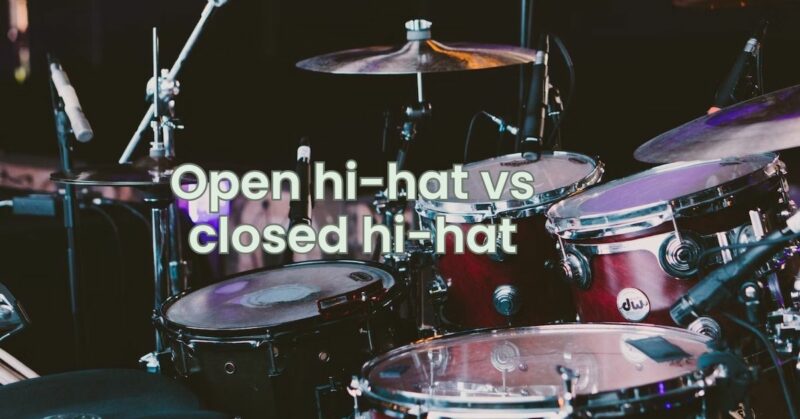The hi-hat is a cornerstone of drumming, offering a versatile range of sounds that shape the rhythm, dynamics, and texture of music. Two fundamental variations of the hi-hat sound are the open and closed hi-hat. Each brings a distinct character to a drummer’s toolkit, allowing for diverse expressions and rhythmic possibilities. In this article, we’ll explore the differences between open and closed hi-hat sounds, their applications, and how they contribute to the sonic landscape of various musical genres.
The Battle of Sound: Open Hi-Hat vs. Closed Hi-Hat
Open Hi-Hat:
The open hi-hat sound is characterized by the cymbals being held apart by the pedal, allowing air to escape and the sound to ring out. Here’s what you need to know about the open hi-hat:
1. Bright and Sustained: The open hi-hat produces a bright and sustained sound due to the unrestricted vibration of the cymbals.
2. Expressive Dynamics: Drummers can control the openness of the cymbals by adjusting the pedal pressure, resulting in varied tonal and dynamic possibilities.
3. Emphasis and Energy: The open hi-hat adds emphasis to beats and creates a sense of energy and movement within a rhythm.
4. Ideal for Accents: It’s commonly used to accentuate strong beats and create rhythmic accents that grab the listener’s attention.
5. Dynamic Versatility: The ability to transition between closed and open sounds offers a wide range of expressive options, from subtle to aggressive.
Closed Hi-Hat:
The closed hi-hat sound is produced when the cymbals are pressed together tightly by the pedal. Here’s what you need to know about the closed hi-hat:
1. Short and Controlled: The closed hi-hat sound is shorter and more controlled due to the limited vibration of the cymbals.
2. Tight and Precise: It delivers a tighter and more defined sound that’s often used for rhythmic precision and foundational grooves.
3. Groove Foundation: The closed hi-hat sets the rhythmic foundation for a song, maintaining a consistent pulse and providing stability.
4. Subtle Texture: It adds subtle texture and complexity to the groove without drawing excessive attention to itself.
5. Versatile Use: The closed hi-hat serves as a versatile rhythmic element that works across various musical genres and styles.
Choosing the Right Hi-Hat Sound:
The choice between open and closed hi-hat sounds depends on the musical context and the drummer’s desired expression:
- Open Hi-Hat: If you’re aiming to add energy, accents, and dynamic variation to your rhythm, the open hi-hat is your go-to choice. It’s perfect for creating excitement and highlighting specific beats.
- Closed Hi-Hat: When precision, stability, and foundational grooves are required, the closed hi-hat shines. It’s the secret behind maintaining a steady pulse and adding subtle complexity to your patterns.
Conclusion: Harmonizing Rhythmic Expressions
The battle between open and closed hi-hat sounds is not about choosing a winner but rather embracing the sonic diversity they bring to your drumming repertoire. Each has its unique place in music, offering drummers a range of expressive tools to shape rhythm, dynamics, and groove. Whether you’re unleashing the energy of the open hi-hat or providing the heartbeat of the rhythm with the closed hi-hat, remember that these cymbals are more than pieces of metal—they’re the pulse that drives the music forward, adding depth, character, and life to every beat.

